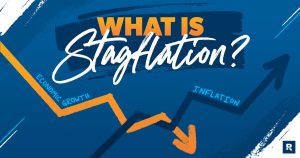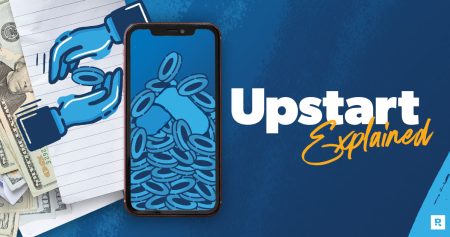Remember when you were first trying to figure out life after high school? People were expecting you to make all these life-altering decisions—like what college to go to, what major to choose, and what dream job to chase after. Somewhere along the way, you were probably sold the idea of taking out student loans.
But now, your college days are behind you, and you’re staring at a mountain of student loan debt, wondering if you should apply for student loan forgiveness.
Here’s the answer: While it is possible to get student loans canceled in a few very specific situations, student loan forgiveness isn’t nearly as reliable as it may seem.
You don’t want to carry around the burden of student loans, but you need a plan that actually works—not one that will leave you more disappointed in the end. So, here’s everything you need to know about student loan forgiveness.
What Is Student Loan Forgiveness?
Student loan forgiveness first came on the scene in 2007 to help graduates with their student loan debt.1 With rare exceptions, student loan forgiveness is only available through federal programs with very specific requirements—like making a certain number of payments or working for an approved employer.
And while President Joe Biden tried introducing a new student loan forgiveness plan in 2022 to cancel a portion of federal student loan debt for all borrowers, the U.S. Supreme Court shut it down.2
So these days, when people want to know about applying for student loan forgiveness, they’re usually talking about those federal programs with strict requirements.
How Does Student Loan Forgiveness Work and Who Qualifies?
Not all student loan forgiveness programs are created equal. Each has its own set of rules and separate application process. (If it already sounds complicated, that’s because it is.) And it doesn’t help that these programs are constantly being tweaked.
But let’s walk through the most common student loan forgiveness programs and their current requirements. Keep in mind, these are only for federal student loans—private student loan forgiveness is a whole other beast.
Public Service Loan Forgiveness
When someone brings up student loan forgiveness, they’re usually talking about Public Service Loan Forgiveness (PSLF). You might hear people say, “All you have to do is work for a nonprofit for 10 years and your student loans are taken care of.” But unfortunately, it’s not quite that simple.
In order to qualify for public service loan forgiveness, you must:3
A lot of people apply for PSLF, but the odds of actually having your loans forgiven through this program are extremely low. Between September 2020 and June 2023, almost 4 million PSLF applications were processed, and only 19,218 of them resulted in forgiveness—that’s only 0.5%.4 So basically, you have better odds of being struck by lightning after winning the lottery (well, not really . . . but it’s close).
And even if you’re one of the “chosen ones” who actually manages to get an approval letter, you might want to tread lightly. Some borrowers who previously qualified for the program have received letters of denial years later.5
That means you could spend 10 years in a low-paying job and make 120 monthly payments, only to find out you still owe the full amount of your student loans. Not cool.
Teacher Loan Forgiveness
If you’re a teacher, you might be able to ditch up to $17,500 of your federal student loans. But to apply for teacher loan forgiveness, you must first:6
- Have Direct Loans or Federal Family Education Loans, either subsidized or unsubsidized
- Teach full time for five academic years in a row
- Have taken out the loan before the end of your five teaching years
- Teach low-income students at an educational service agency or at the elementary, middle or high school level
- Make sure you’ve never had an overdue balance on your loan (that means not a single missed payment!)
Even after you’ve checked all the right boxes, your application may not get approved. And you should know that you can only get up to $17,500 forgiven if you’re a math, science or special education teacher—any other teachers can only get up to $5,000 forgiven.7
Total and Permanent Disability Discharge
If you have a disability that leaves you totally or permanently disabled, your federal student loans or your TEACH Grant service obligation could be discharged.
Ready to get rid of your student loans once and for all? Get our guide.
To qualify for total and permanent disability (TPD) discharge, you have to prove your disability status through either the Veterans Affairs office, the Social Security Administration office or your physician.
But you should know that if your loans do get discharged, you’ll be monitored for the next three years to make sure you actually have a disability. And if your condition changes at all during those three years, you may have to start paying on your loans again.
Borrower Defense to Loan Repayment
If your school misled you or violated certain state laws, you might be able to have some or all of your student loans discharged. You only qualify for this if your school committed fraud related directly to your federal student loan—like claiming more graduates got jobs straight out of their program than actually did.
Borrower defense usually happens automatically for those who were affected on a large scale.8 But if you feel like you have an individual case for borrower defense and want to apply on your own, you’ll have to wade through a lot of legal jargon and documentation. While it’s possible that you could have your loans discharged, proving that your school committed fraud isn’t easy.
Closed School Discharge
If you lost money because your school closed before you could get a degree, you may qualify for closed school discharge if:9
- You were enrolled when your school closed
- You were on an approved leave of absence when your school closed
- Your school closed within 180 days after you withdrew
Like with borrower defense to repayment, you usually don’t have to do anything to get this kind of cancellation. But if the U.S. Department of Education doesn’t automatically send you a notice of your loans being discharged, you may need to send in your own application.
Should I Apply for Student Loan Forgiveness?
By now, you’ve probably figured out that student loan forgiveness isn’t exactly a ticket to freedom. You have to jump through a lot of eligibility hoops, and the last thing you want to do is stay in a low-paying job for 10 years in the hope your loans will be forgiven, only to realize later you did all that work for nothing. Especially when you could’ve paid off your student loan debt in half the time (and saved a ton of money in interest)!
But should you apply for student loan forgiveness anyway? Here’s our advice: If you’ve already put in the hours at an approved job and made the required payments (or you’re super close), and you think applying for forgiveness will help you come out ahead—go ahead and apply.
Otherwise, if you’re thinking about starting down the forgiveness path, hoping you can apply years from now, don’t. A lot can happen between now and then (both with policy changes and your own situation). And you’re better off making your own plan—one that won’t have you waiting on the government.
The Alternative to Student Loan Forgiveness
Instead of counting on the government to take care of things, it’s time to take control of your student loans yourself. Here’s the best way to pay off your student loan debt fast!
1. Change your mindset.
Here’s the deal: You can’t just stick to the standard loan repayment plan and expect to ever get ahead of your student loans. It’s a system designed to keep you in debt longer, paying way more in interest. And you’ve got to get angry about that!
If you really want your student loans gone—as in, no more payments robbing your bank account and your sanity every month—it’s time to get serious about paying them off. When you decide that you’re sick and tired of student loan debt weighing you down, you’re more likely to take matters into your own hands and get them out of your life for good.
2. Get on a budget.
When payments are eating your paycheck every month, it can be hard to see how it’s possible to make progress on your student loans, let alone cover your basic needs. But when you create a budget and start telling your money where to go before the month begins, you’ll feel like you’ve gotten a raise. Suddenly, you’re seeing exactly how much more you can throw at that monthly payment—and how much sooner you can be out of debt.
If you’re new to budgeting, the free EveryDollar app is the best place to get started. It makes setting up your first budget super simple!
3. Use the debt snowball.
The debt snowball is the fastest way to pay off debt, especially if you’ve got multiple student loans or other debt (like car payments and credit card bills). You start by paying minimum payments on all your debt, except your smallest balance—that’s the one you’re going to throw all your energy into wiping out.
Once that smallest debt is gone, you take that minimum payment (and anything extra you can come up with) and put it toward the second-smallest balance. Pretty soon, you’re gaining momentum and making more progress than you ever thought possible—like a snowball rolling downhill. Keep going until all your debt is gone.
The success rate of people who use this method is way higher than those who apply for student loan forgiveness.
4. Increase your monthly payment.
Okay, so how exactly do you get the extra dollars to throw at your debt snowball? Well, you can boost your student loan payments in a ton of different ways.
You could pick up a side hustle (like delivering food or driving with Uber), take on extra hours at work if possible, or sell stuff (it’s the perfect excuse to clear some clutter). You can also cut back on spending and use the savings to fuel your loan payoff. Figure out what works for you and your lifestyle—just do something. And remember, you only have to hustle until you’re debt-free. You’ve got this!
The Bottom Line
You just got a ton of info in a very short amount of time, so don’t be afraid to reread the sections that apply to you and give yourself a minute for all this new knowledge to set in. Once you’ve gotten a handle on everything, you’ll be in good shape to get rid of your student loans.
When you have the right game plan and the motivation to attack your student loan debt, you’re ready to win! And you shouldn’t have to wait a decade to get your life back. You’ve got what it takes to get rid of your student loans now.
Read the full article here










